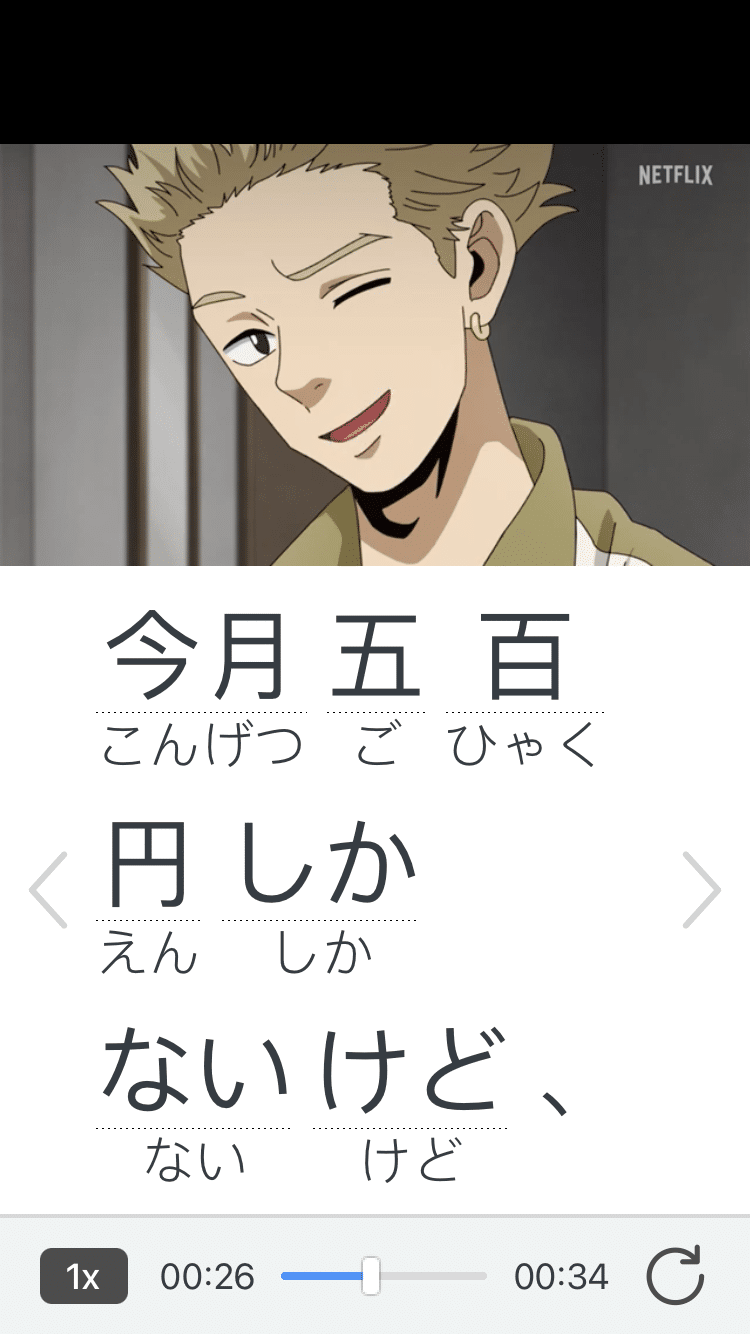
Japanese Plural: 16 Ways to Do the Japanese Equivalent of Adding “-s” and “-es”
Using the plural in Japanese isn’t as simple as attaching -s or -es to the end of nouns.
Instead, the Japanese language uses other ways to express plurality, like adding suffixes (e.g., ~達) or using counters (e.g., つ). You can also pay attention to context, which clues you in on whether the subject being talked about is singular or plural.
I know this is a lot to take in. But don’t worry! By the end of the article, you’ll have an understanding of a variety of techniques used to express the Japanese plural.
Contents
- 1. ~達 ( たち )
- 2. ~ら
- 3. ~方 ( かた / がた ) and ども
- 4. 人 ( り / にん )
- 5. 枚 ( まい )
- 6. ~つ
- 7. いくつか and 何~か ( なん ~ か )
- 8. たくさん
- 9. 多く (おおく)
- 10. 全て (すべて) and 全部 (ぜんぶ)
- 11. 少ない (すくない)
- 12. 諸~ ( しょ~ )
- 13. 数~ ( すう~ )
- 14. 多~ ( た~ )
- 15. 々 ( くりかえし )
- 16. ズ (ず)
- How to Practice the Plural in Japanese
- And One More Thing...
Download: This blog post is available as a convenient and portable PDF that you can take anywhere. Click here to get a copy. (Download)
1. ~達 ( たち )
語尾 (ごび) — Suffixes may be placed at the end of nouns to indicate quantity and are frequently used to talk about people in the plural form.
For example, ~達 is one of the most neutral ways to refer to groups of more than one person or things. To use it, simply put it at the end of a noun.
Even if you’re a beginner to Japanese, you’ve probably seen this suffix before in words like:
友達 (ともだち) — Friend(s)
私達 (わたしたち) — We/Us
One thing to note is the use of the plural “you” in Japanese.
An example is the word 貴方達 (あなたたち). While theoretically, this expresses the second-person plural (“you all”), it’s very informal and can even be considered rude.
Which brings us to our next entry…
2. ~ら
This is another suffix used to make nouns plural, but is less formal and can be, as I’ve mentioned, rude in some contexts.
For example, you may have come across the term 奴ら (やつら) — those guys in anime or manga. While it sounds cool when uttered by your favorite character, you do not want to use it to refer to a group of your superiors or elders—not within their hearing range, at least.
Of course, because Japanese is never that simple, ~ら can also express humility in certain situations, such as referring to one’s own group. 僕ら (ぼくら) uses the suffix to mean “we/us” and isn’t impolite.
So, it’s best to learn the instances where using ~ら is considered polite. This is much safer than trying it out in real life and getting awkward results—or worse, judgmental glares from others.
3. ~方 ( かた / がた ) and ども
Both of these suffixes indicate respect for the nouns attached to them.
They’re often used when mentioning a group of one’s superiors or people that the speaker may not be familiar with. They can also refer to oneself and associates in a formal setting.
4. 人 ( り / にん )
There are many different counters in Japanese, which can make expressing plurals extra complicated. For one, some counters are more appropriate for certain nouns than others. Furthermore, some nouns use counters, while others don’t. In the interest of brevity, we’ll only cover the most common ones in this article.
Let’s start with 人, which is both a counter for the number of people and the word for “person:”
一人 ( ひとり ) — One person
二人 ( ふたり ) — Two persons
三人 ( さんにん ) — Three persons
子供が三人います。 (こどもがさんにんいます。)
I have three children.
5. 枚 ( まい )
If you’re dealing with flat objects like paper, sheets, etc., use 枚:
一枚 ( いちまい ) — One flat object
二枚 ( にまい ) — Two flat objects
三枚 ( さんまい ) — Three flat objects
クレジットカードが二枚財布に入っています。 (くれじっとかーどがにまいさいふにはいっています。)
I have two credit cards in my wallet.
6. ~つ
If you’re dealing with objects that don’t use specialized counters in Japanese, there’s a good chance you’ll only need to use ~つ:
一つ (ひとつ) — One thing
二つ (ふたつ) — Two things
三つ (みっつ) — Three things
リンゴを二つ持っています。 (りんごをふたつもっています。)
I have two apples.
7. いくつか and 何~か ( なん ~ か )
いくつか and 何~か are phrases that can be translated as “some” or “several” in English.
You can use these:
- By itself as the object of a sentence
- Alongside a noun to express that you’re talking about more than one of that noun
- When talking about more than one object with an unspecified or unknown quantity
For example:
何人か (なんにんか) — several people
何年か (なんねんか) — several years
何人かの卒業生はもう仕事しています。 (なんにんかのそつぎょうせいはもうしごとしています。)
Some graduates are already working full-time jobs.
いくつかの理由で、会長が退職しました。 (いくつかのりゆで、かいちょうがたいしょくしました。)
The CEO resigned for several reasons.
8. たくさん
In Japanese, there are adverbs that can show that more than one of something exists. You can use these adverbs whether a noun is countable or not.
For example, たくさん roughly translates to the English phrase “a lot” or “lots” and can be used with countable or uncountable nouns:
今日は暑いので水をたくさん飲みます。 (きょうはあついのでみずをたくさんのみます。)
I’m drinking lots of water because it’s hot today.
9. 多く (おおく)
Like たくさん, 多く is equivalent to the English word “many” and can be used with both countable and uncountable nouns:
学校では学生が多くのことを学びました。 (がっこうではがくせいがおおくのことをまなびました。)
The students learned many things in school.
10. 全て (すべて) and 全部 (ぜんぶ)
The adverb 全て means “all,” while 全部 can be translated as “all” or “total:”
全ての星がキラキラ輝いています。 (すべてのほしがきらきらかがやいています。)
All the stars are shining brightly.
お皿を全部洗います。 (おさらをぜんぶあらいます。)
I wash all of the dishes.
These pronouns are similar, but it’s important to note that 全員 (ぜんいん) can also be used to talk about people.
11. 少ない (すくない)
少ない is a handy adverb that can refer to a small, unspecified and plural quantity. Think of it like the English word “few:”
今日は人が少ないですね。 (きょうはひとがすくないですね。)
There aren’t that many people today.
12. 諸~ ( しょ~ )
Specific prefixes can be placed before certain nouns to denote plurality. These aren’t as common in conversation as they are in written Japanese, but they’re still good to know.
For example, 諸~ can be roughly translated as “various:”
諸国 (しょこく)
Various countries
13. 数~ ( すう~ )
Likewise, 数 can mean “several:”
数時間 (すうじかん)
Several hours
14. 多~ ( た~ )
多~ is roughly equivalent to the English prefix “multi-” or “poly-:”
多国語 (たこくご)
Polyglotism (lit. “multiple country languages”)
15. 々 ( くりかえし )
Another form of plural in Japanese is 々, a symbol representing a repeated character.
Sometimes, it’s used in adjectives. For example, 若い (わかい) — young can also appear as 若々しい (わかわかしい) — youthful.
In this situation, however, we’ll use repetition to imply pluralization.
Some common examples are:
人々 (ひとびと) — people
このブランドは多くの人々に選ばれています。 (このぶらんどはおおくのひとびとにえらばれています。)
This brand is chosen by many people.
家々 (いえいえ) — houses
全ての家々が数か月間で建てられました。 (すべてのいえいえがすうかげつかんでたてられました。)
The houses were built in a few months.
木々 (きぎ) — trees
木々に咲く花が綺麗です。 (きぎにさくはながきれいです。)
The flowers that are blooming on trees are beautiful.
While you don’t want to use the repetition symbol with just any noun, you should still be on the lookout for words used with the repetition symbol.
Let’s combine an earlier concept from the ~ら section to create the example 我々ら (われわれら) — We/Us. It’s a humble way to refer to one’s group in the plural form.
16. ズ (ず)
This form of pluralization in Japanese has become increasingly common over the years. You can see it on billboards, advertisements, titles and the like, and is probably derived from the English “s.” I don’t recommend using it too often, though, because it’s more likely to be used for loanwords:
シティタワーズ豊洲 (してぃたわーずとよす)
Toyosu City Towers
ギャルズ (ぎゃるず)
Gals (a comedy trio in Japan and the name of a manga series.)
How to Practice the Plural in Japanese
As you can see, there are many options for pluralizing nouns in Japanese.
I hope you’re feeling confident about the Japanese plural. Once you learn these basic grammar rules, it’s really not as hard as it looks.
So, where can you go from here? It’s not too hard to make plural practice a part of your daily routine. Here are some tips:
- Brainstorm some questions that involve plural nouns. How many siblings do you have? How many books did you read last week? These are great conversation points to practice, either on your own or with a language exchange partner.
- Visit learner forums like the WordReference Japanese forum. There, you can ask tricky questions about proper noun vis-à-vis plural usage.
- For more targeted practice, consider using flashcards to practice your counters and adverbs. As you’ve seen, counters and adverbs provide context, so it’s especially important to know them like the back of your hand. Create flashcards to make sure you’re familiar with the various counters in Japanese. It may even be helpful to take common counters and test your knowledge of how to use them once in a while.
- Read a Japanese learner newspaper like NHK Easy. This website will expose you to a wide variety of plurals in Japanese.
- Watch some Japanese television for great immersive practice. Find a show that comes with subtitles so you can read along, or challenge yourself and go without them. This is one of the best ways to hear natural Japanese.
You can also visit language learning platforms like FluentU to supplement your Japanese TV immersion.
FluentU takes authentic videos—like music videos, movie trailers, news and inspiring talks—and turns them into personalized language learning lessons.
You can try FluentU for free for 2 weeks. Check out the website or download the iOS app or Android app.
P.S. Click here to take advantage of our current sale! (Expires at the end of this month.)

Whatever you choose in terms of practice, have fun!
Download: This blog post is available as a convenient and portable PDF that you can take anywhere. Click here to get a copy. (Download)
And One More Thing...
If you love learning Japanese with authentic materials, then I should also tell you more about FluentU.
FluentU naturally and gradually eases you into learning Japanese language and culture. You'll learn real Japanese as it's spoken in real life.
FluentU has a broad range of contemporary videos as you'll see below:

FluentU makes these native Japanese videos approachable through interactive transcripts. Tap on any word to look it up instantly.

All definitions have multiple examples, and they're written for Japanese learners like you. Tap to add words you'd like to review to a vocab list.

And FluentU has a learn mode which turns every video into a language learning lesson. You can always swipe left or right to see more examples.

The best part? FluentU keeps track of your vocabulary, and gives you extra practice with difficult words. It'll even remind you when it’s time to review what you’ve learned. You'll have a 100% personalized experience.
Start using the FluentU website on your computer or tablet or, better yet, download the FluentU app from the iTunes or Google Play store. Click here to take advantage of our current sale! (Expires at the end of this month.)


